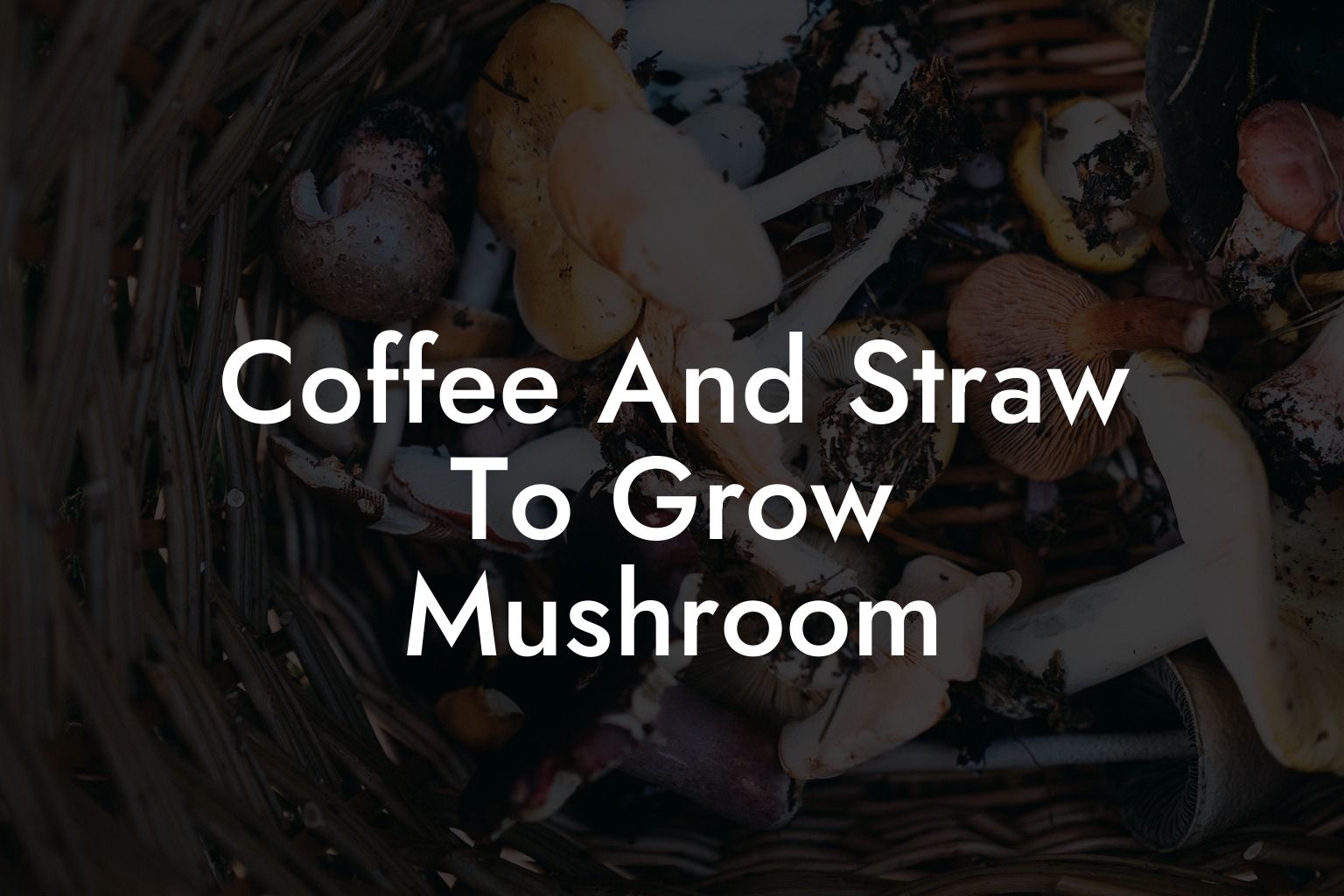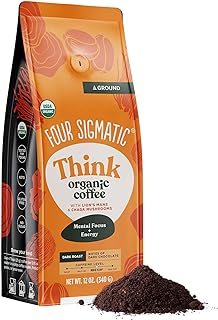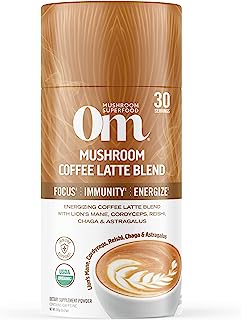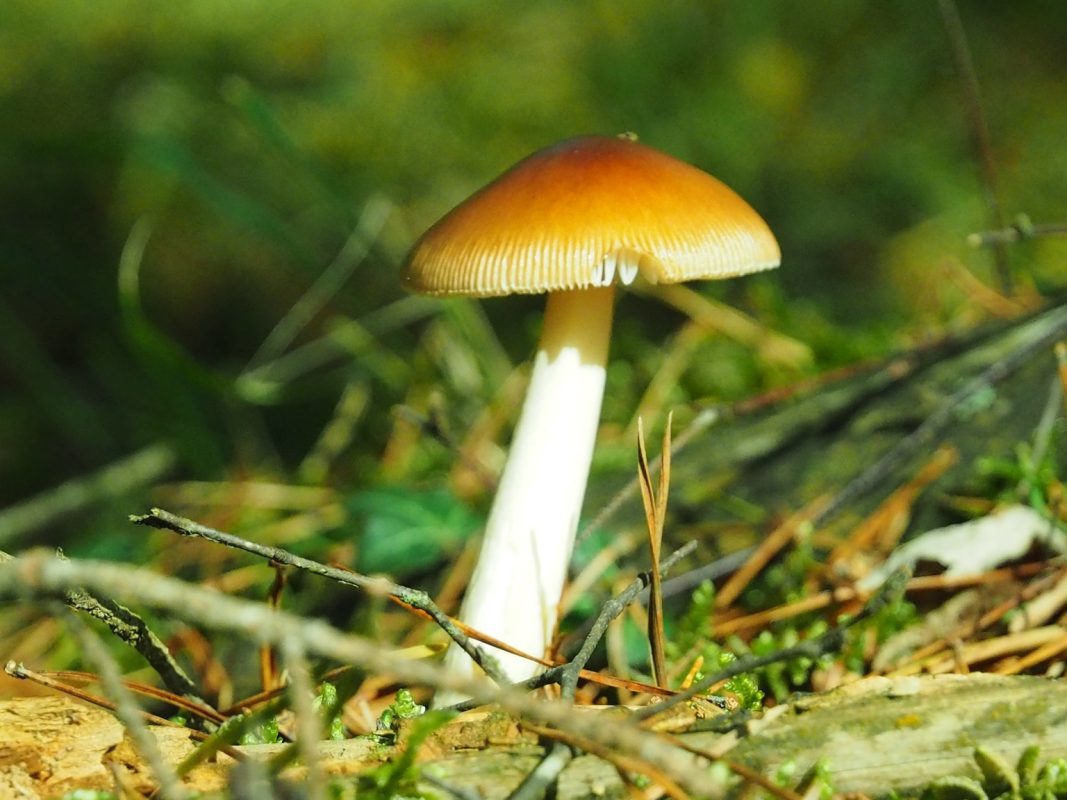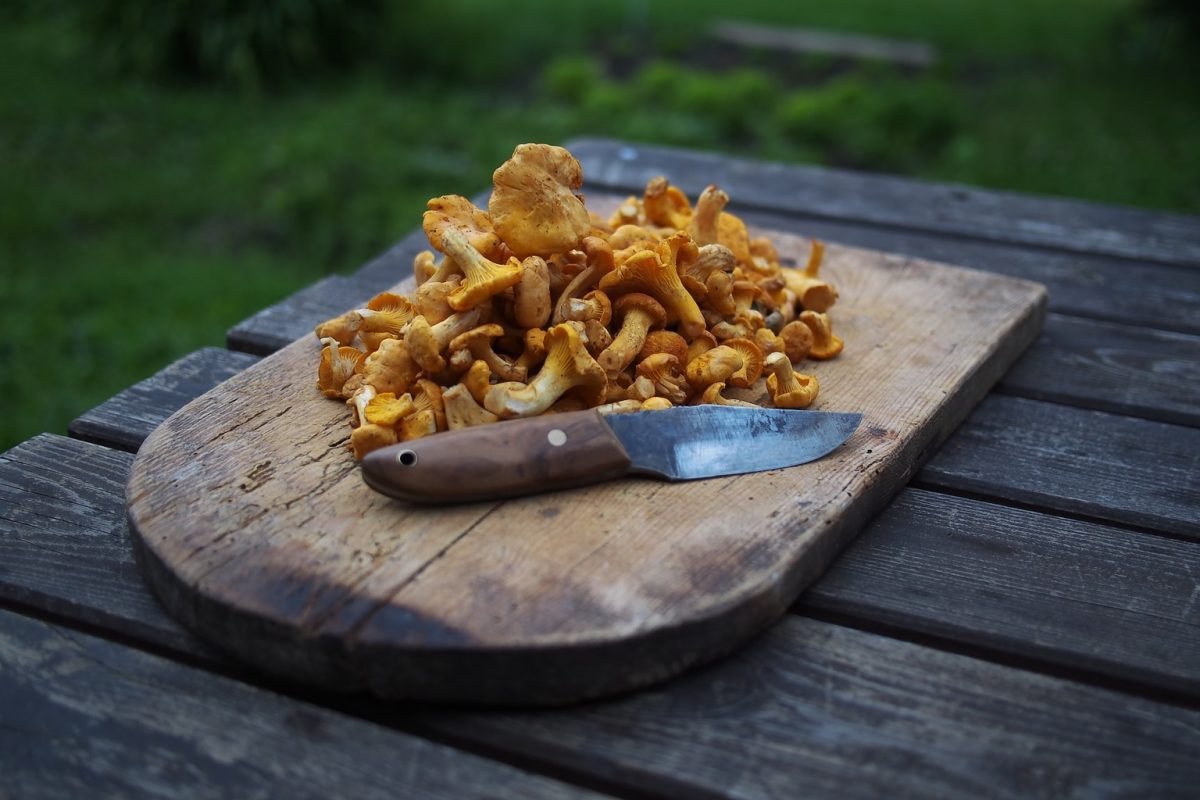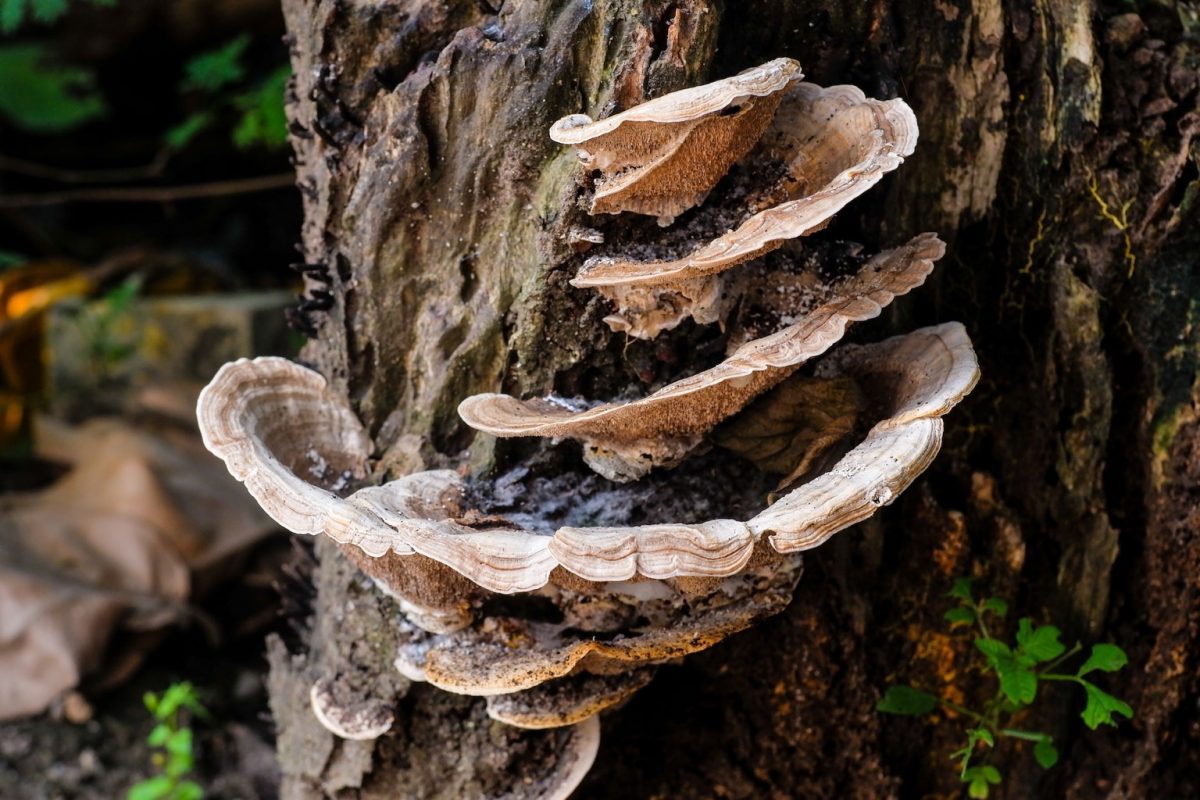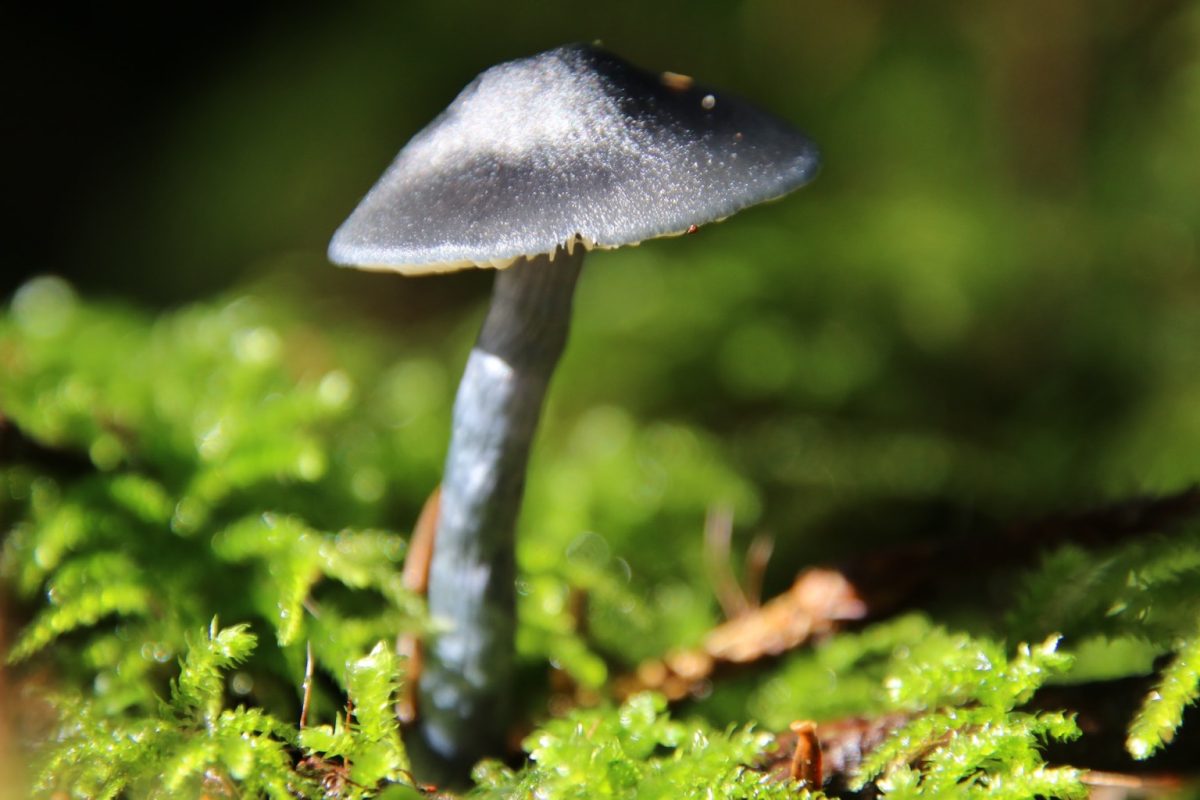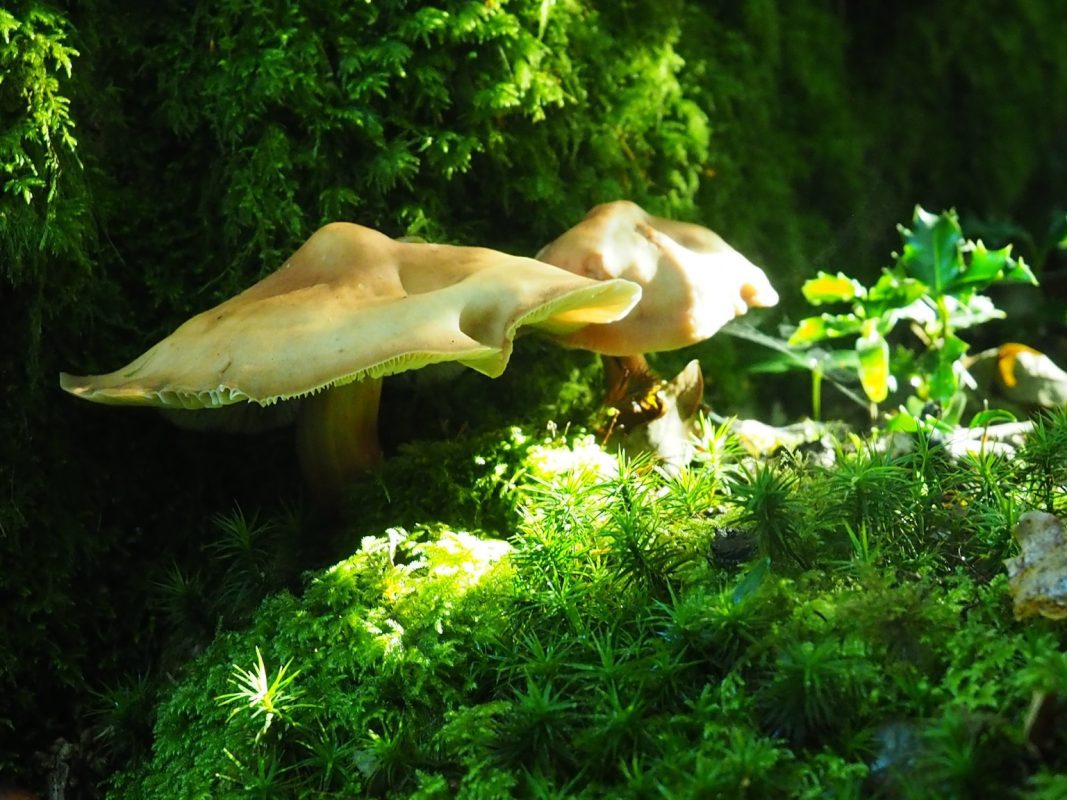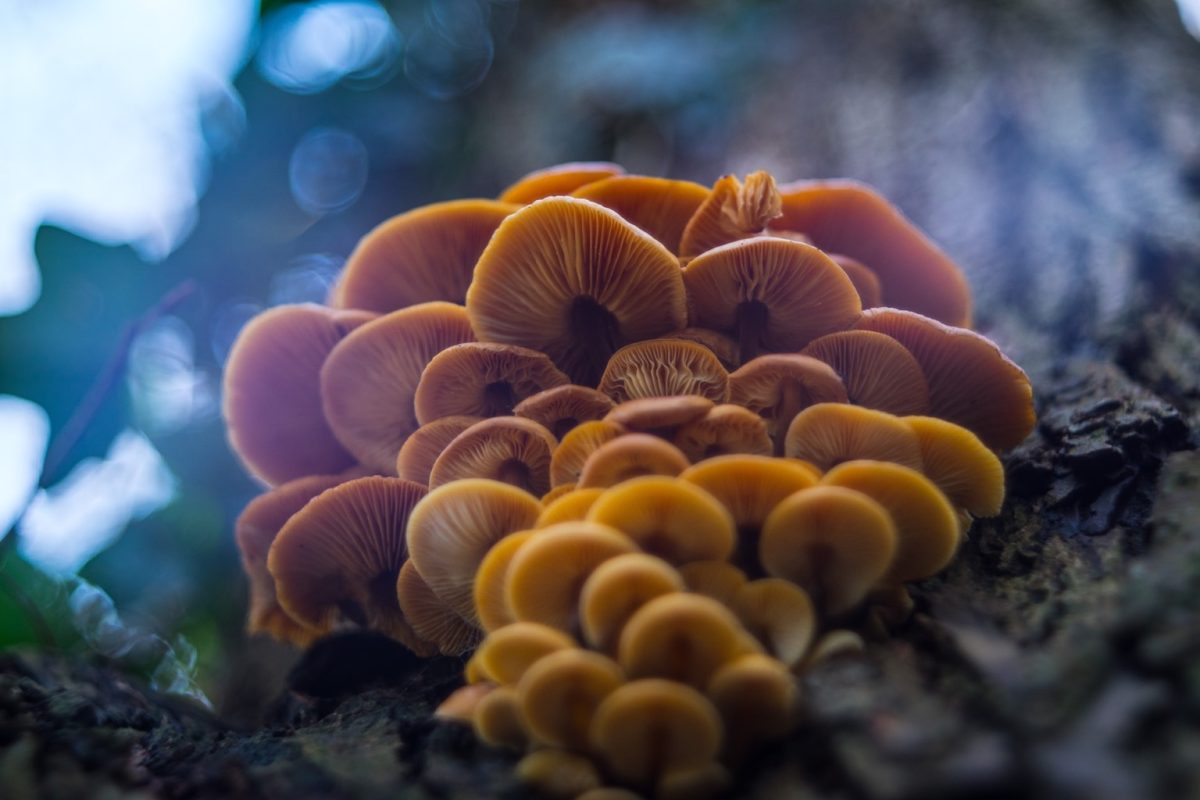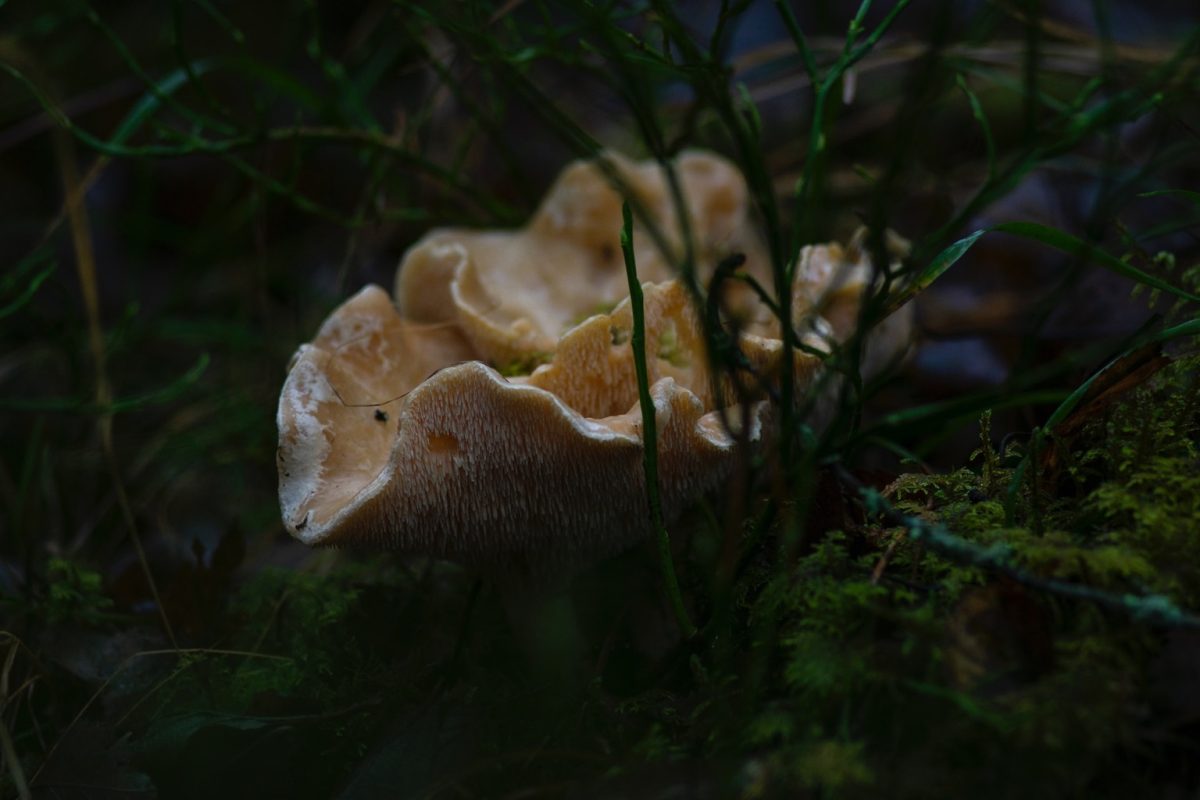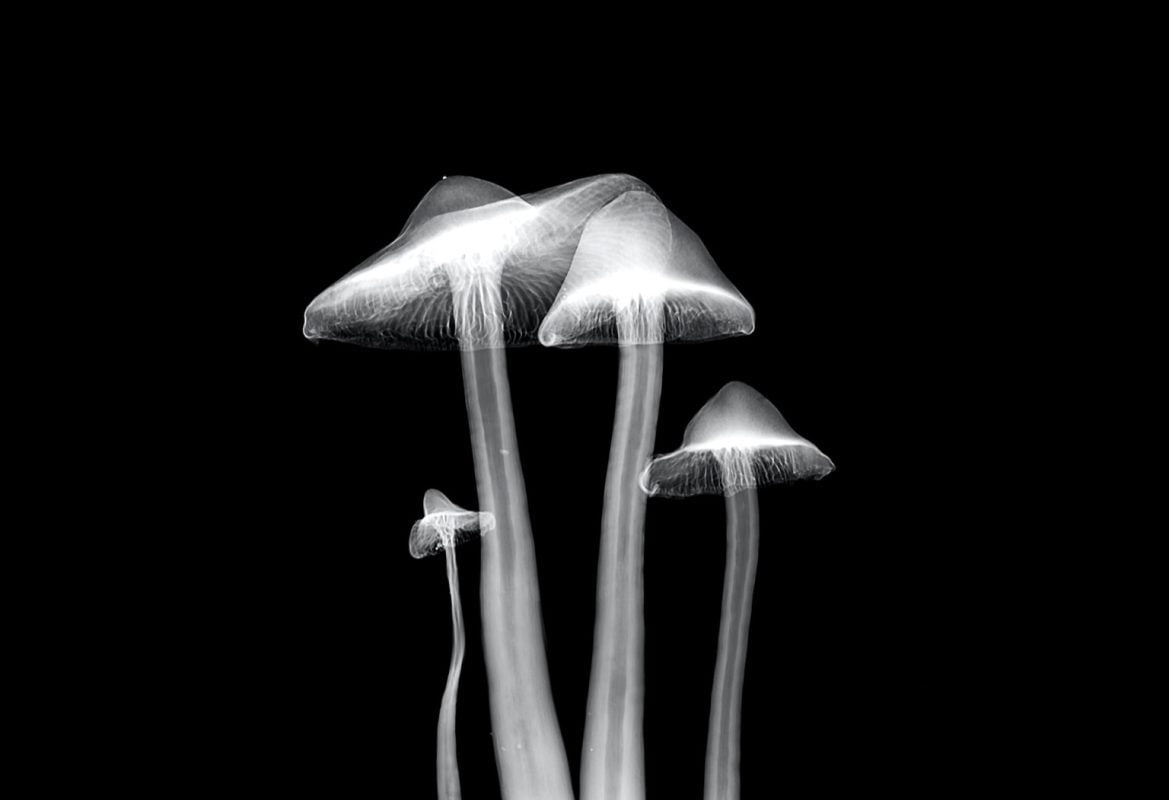Ever thought your morning cup of joe could do more than wake you up? Imagine it powering up an at-home mushroom farm while you sip on your favorite brew, or better yet, savor a unique blend of mushroom coffee that elevates your energy and boosts your wellness. Welcome to the unconventional world where coffee and straw unite to grow mushrooms! In this guide, we’re diving headfirst into the fascinating crossover between sustainable agriculture, DIY mycology, and the ever-popular coffee culture. Whether you’re an eco-warrior, a caffeine fiend, or simply curious about the magic behind mushroom coffee, buckle up as we explore how repurposing coffee grounds and straw can yield a bountiful harvest of nutritious fungi.
Quick Links to Useful Sections
- What Is Mushroom Coffee and Why Should You Care?
- The Science Behind Using Coffee Grounds and Straw to Grow Mushrooms
- Cultivating a Mindful and Sustainable Lifestyle
- Ingredients for Success: Why Coffee Grounds and Straw?
- A Step-by-Step Guide to Growing Mushrooms with Coffee and Straw
- Step 1: Gather Your Materials
- Step 2: Prepare the Straw
- Step 3: Mix in the Coffee Grounds
- Step 4: Inoculate with Mushroom Spawn
- Step 5: Incubation
- Step 6: Fruiting Stage
- Tips and Tricks for a Successful Mushroom Farm at Home
- Common Troubleshooting Tips for Home Mushroom Cultivation
- Issue 1: Contamination
- Issue 2: Slow Colonization
- Issue 3: Insufficient Fruiting
- Issue 4: Overly Rapid Drying
- Case Studies: Real-Life Successes with Coffee and Straw Cultivation
- A Café Owner’s Sustainable Experiment
- The Urban Homesteader’s Journey
- A College Dorm Transformation
- Sustainability and the Future of Coffee-Inspired Mushroom Cultivation
- Resources and Community Support: Your Next Steps
- Frequently Asked Questions About Growing Mushrooms with Coffee and Straw
- Your Journey from Coffee Cup to Fungal Cup of Wellness
What Is Mushroom Coffee and Why Should You Care?
If you’ve spent any time online lately, you’ve probably come across the term “mushroom coffee.” It’s not a fad brewed up in a hipster café, it’s a clever fusion of gourmet coffee and carefully cultivated medicinal mushrooms, taking your beloved caffeine kick to a whole new level. The idea is simple yet revolutionary: infuse the robust flavor of coffee with the cognitive, immune-boosting, and anti-inflammatory properties of mushrooms. This isn’t your grandma’s instant coffee mix; it’s an innovative way to combine two powerhouse ingredients into one delicious, health-enhancing beverage.
But there’s more to this story than just your morning pick-me-up. What if we told you that the same ingredients, or by-products, in this case, used to make that invigorating brew could also be harnessed to cultivate gourmet mushrooms right in your own home? That’s right. Coffee grounds and straw, two materials that might otherwise find their way to the compost heap or landfill, are a match made in eco-friendly heaven for growing mushrooms.
In this pillar page, we’ll break down everything from the science behind using coffee and straw as a growing medium to the practical step-by-step methods you can follow to cultivate your own organic mushroom garden. So get ready to dive into a world where sustainability meets creativity, and where your passion for coffee can merge with a love for homegrown, nutrient-packed mushrooms.
The Science Behind Using Coffee Grounds and Straw to Grow Mushrooms
Let’s get geeky for a moment. When it comes to mushroom cultivation, the substrate is the unsung hero that provides essential nutrients for fungal growth. Surprisingly, coffee grounds are chock-full of nitrogen, while straw is rich in cellulose, both critical ingredients that create an ideal environment for mushrooms to thrive.
Looking For The Best Mushroom Coffee? You'll Love These:
Mushrooms are nature’s recyclers. They have an uncanny ability to break down complex organic materials and convert them into protein-rich food. The nitrogen in coffee grounds acts as a natural fertilizer, giving your mushrooms an extra boost. On the other hand, straw offers the necessary structure and cellulose that help anchor the roots (or mycelium, in this case) and support growth. When combined, coffee grounds and straw create a balanced substrate that can outperform many commercial mushroom growing mediums.
Studies in sustainable agriculture and mycology have shown that substrates combining high-nitrogen waste with lignin-rich materials promote vigorous mycelial expansion. This means that not only are you recycling everyday waste products, but you’re also creating a healthier, more robust medium for mushroom growth. Whether you’re cultivating oyster mushrooms, shiitake, or even those trendy lion’s mane, this dynamic duo can set you up for a bountiful harvest without the need for expensive commercial substrates.
Cultivating a Mindful and Sustainable Lifestyle
For today’s eco-conscious Gen Z and savvy millennials, sustainability isn’t just a buzzword, it’s a lifestyle. By repurposing coffee grounds and straw, you’re not only saving money and reducing waste, but you’re also actively contributing to a circular economy. Every cup of coffee you brew can pave the way for a flourishing mushroom farm, promoting a healthier lifestyle both in what you drink and what you cultivate.
Think about it: you’re turning everyday waste into a nutrient-rich medium for your mushrooms while enjoying the myriad benefits of mushroom coffee. From boosting immunity to enhancing focus and reducing stress, mushrooms have been revered for centuries in traditional medicine across the globe. Now, thanks to innovative cultivation methods, you can incorporate these superfoods into your daily routine in a way that’s as sustainable as it is delicious.
Embracing this method is a profound nod to the world of regenerative living, a movement that seeks to restore and revitalize our natural environment through creative reuse and eco-friendly practices. Coffee grounds and straw might seem like humble by-products, but in the hands of an inspired cultivator, they become the foundation for a thriving, sustainable ecosystem.
Ingredients for Success: Why Coffee Grounds and Straw?
Let’s break down the star players in this unconventional cultivation combo:
- Coffee Grounds: Loaded with nitrogen, trace minerals, and a slight acidity, coffee grounds create a luscious and nutrient-dense base for your mushrooms. They’re the leftover gold from your morning brew, ready to give back to nature.
- Straw: Often discarded after harvesting cereal grains, straw offers structural support and is rich in cellulose. Its fibrous texture provides the perfect matrix for mycelial networks to spool out and establish a foothold.
- The Perfect Balance: When combined, the high-nitrogen profile of coffee grounds complements the cellulose-rich straw, resulting in a substrate that’s both sturdy and nutrient-rich. This harmonious blend not only supports vigorous mycelial growth but also curbs contaminants that can sabotage your mushroom farm.
Moreover, using these materials supports sustainable practices by diverting waste from landfills and repurposing them into something invaluable. It’s a win-win situation for your health, your wallet, and our planet.
A Step-by-Step Guide to Growing Mushrooms with Coffee and Straw
Ready to roll up your sleeves and transform your kitchen scraps into a mini mushroom farm? Follow these tried-and-tested steps to get started:
Step 1: Gather Your Materials
What you’ll need:
- Fresh or used coffee grounds (ensure they are free from additives like sugar or cream)
- Clean straw (wheat, barley, or oat straw works best)
- Mushroom spawn (choose the variety you fancy, oyster, shiitake, lion’s mane, etc.)
- A large mixing container or bucket
- Gloves, a face mask, and a clean workspace (cleanliness is next to mushroom success!)
Pro tip: Sourcing organic coffee grounds from your local café or your own home brewing ensures there are no unwanted chemicals in your substrate.
Step 2: Prepare the Straw
Straw needs to be broken down into smaller pieces to create an ideal environment for mushroom growth. Begin by cutting your straw into manageable chunks (approximately 2-3 inches long). Next, soak it in water for several hours or overnight. This hydration process softens the fibers and helps remove any dirt or dust.
Once soaked, drain the straw and let it dehydrate slightly until it’s damp but not dripping.
Step 3: Mix in the Coffee Grounds
In your mixing container, combine the damp straw with coffee grounds in roughly equal parts. The exact proportions can vary based on your mushroom variety, but most hobbyists have great success with a 50/50 blend. Stir the mixture thoroughly to ensure an even distribution of nutrients and moisture.
The coffee grounds not only add nutritional value but also help to balance the pH, creating a congenial environment that discourages unwanted microbial guests.
Step 4: Inoculate with Mushroom Spawn
Now comes the magical part: introducing your mushroom spawn into the mix. Sprinkle the spawn evenly over your coffee and straw blend, then gently mix it in. Take your time with this step, ensuring that the spawn is well-distributed is key for uniform mycelial colonization.
For best results, work in a clean space and consider using gloves and a mask to reduce the risk of contamination. Your inner mad scientist will thank you later!
Step 5: Incubation
Transfer your inoculated mixture into a clean, breathable container, think plastic bins with holes or even a repurposed cardboard box with ventilation slots. Keep the container in a dark, warm spot (around 70°F or 21°C) where the mycelium can colonize the substrate without interference from sunlight.
Over the next couple of weeks, you’ll notice white mycelial threads slowly weaving through the mixture. This is your sign that the fungi are getting cozy and expanding.
Step 6: Fruiting Stage
Once your substrate is fully colonized (typically after 2-3 weeks), it’s time to transition to the fruiting stage. Move the container to a cooler, lighted area with high humidity. You can mist the substrate daily with water to maintain moisture levels.
In just a few days to a week, you should start to see small pinheads forming, which will eventually bloom into full-sized mushrooms. The period from pinning to harvest varies depending on the mushroom variety, so keep a close eye on your crop.
Harvest your mushrooms when they’re mature by gently twisting them off at the base. And voilà, you’ve transformed used coffee grounds and humble straw into a thriving, edible ecosystem.
Tips and Tricks for a Successful Mushroom Farm at Home
Growing mushrooms using coffee grounds and straw is as much an art as it is a science. Here are some extra nuggets of wisdom to ensure your fungal harvest is nothing short of spectacular:
- Keep It Clean: Contamination is the arch-nemesis of any home cultivation project. Sterilize your tools and work surfaces before diving in.
- Patience, Young Grasshopper: Mushrooms take time to colonize and fruit. Resist the urge to peek too frequently and disturb the mycelium, they need their undisturbed chill time.
- Monitor Moisture Levels: Too much water can drown your fungi, while too little can stress them out. Aim for a damp environment without being soggy.
- Airflow Is Your Friend: Ensure your growing area has proper ventilation. Stagnant air can invite mold and reduce yield.
- Experiment with Varieties: Different mushrooms have different flavor profiles and medicinal properties. From the mild and versatile oyster mushroom to the robust shiitake, try multiple varieties to see what suits your taste.
These little tips can boost your success rate and even inspire you to tweak your method for ever-better yields. After all, every batch is an opportunity to learn and improve your craft.
Common Troubleshooting Tips for Home Mushroom Cultivation
Even the most dedicated mycologists face challenges when cultivating mushrooms. Here are some common issues and how to fix them:
Issue 1: Contamination
If you notice off-color patches or unusual smells, you might be dealing with bacterial or mold contamination. The best remedy? Prevention. Always maintain strict hygiene and consider using a homemade disinfectant spray for your work area.
Should contamination occur, remove affected spots immediately and assess whether the entire batch is salvageable. “When in doubt, throw it out” remains the mantra to avoid more significant issues.
Issue 2: Slow Colonization
If your mycelium is lagging behind the expected growth speed, check the environmental parameters. Temperature fluctuations, low humidity, or poor ventilation can all slow down colonization. Adjust these factors and give your fungi a little boost.
Issue 3: Insufficient Fruiting
No sign of pinheads after a few weeks? It might be time to kick your fruiting stage into higher gear. Ensure plenty of indirect light and maintain a high-humidity environment. Sometimes a slight drop in temperature can trigger a fruiting response.
Experiment with misting frequencies and consider giving your substrate a gentle shake to stimulate the mycelium when conditions are right.
Issue 4: Overly Rapid Drying
Mushrooms thrive in a humid environment, and if your substrate starts to dry out, production will suffer. Cover your container with a breathable lid or plastic wrap with holes to maintain moisture levels. Regularly misting the substrate can also help during dry spells.
Case Studies: Real-Life Successes with Coffee and Straw Cultivation
Theory is great, but nothing beats real-world examples to prove that growing mushrooms with coffee grounds and straw actually works. Here are a few success stories from passionate DIY cultivators:
A Café Owner’s Sustainable Experiment
Meet Alex, the owner of a bustling neighborhood café who was tired of tossing out used coffee grounds at the end of the day. After reading about the potential of coffee-straw substrates, Alex decided to try cultivating oyster mushrooms in a storage room behind the counter. With minimal investment and a lot of enthusiasm, Alex’s experiment paid off, within a month, a bountiful harvest of fresh, organic mushrooms was ready to be sold alongside his regular coffee offerings. Not only did this reduce waste, but it also created an engaging story for customers drawn to the café’s sustainable practices.
The Urban Homesteader’s Journey
Jamie, a self-proclaimed urban homesteader, turned to coffee and straw after exploring various DIY food projects. Living in a small apartment with limited space, Jamie set up a mini mushroom farm using coffee grounds collected from community coffee shops and locally sourced straw. Over time, Jamie’s mushroom harvests not only provided a steady supply of nutritious ingredients for home cooking but also sparked a viral social media trend showcasing creative, sustainable urban farming.
A College Dorm Transformation
In one of the most innovative college dorm projects ever, a group of enthusiastic students decided to experiment with growing mushrooms using coffee grounds from their campus café and straw from local hangout spots. After a bit of trial and error, their project blossomed into a thriving mini-farm that not only provided fresh mushrooms for campus dining but also became a case study in sustainable, low-budget agriculture. Their experiment even caught the eye of local sustainability groups, making it a perfect blend of fun, education, and eco-friendly innovation.
Sustainability and the Future of Coffee-Inspired Mushroom Cultivation
The trend of using coffee and straw to grow mushrooms isn’t just about a cool DIY project, it’s a beacon of sustainability in today’s world. As more people become environmentally conscious, the idea of turning common waste into a thriving source of food and wellness resonates on multiple levels.
By embracing this practice, you’re not only cultivating a nutritious crop but also contributing to waste reduction and the broader movement toward sustainable, regenerative agriculture. The techniques detailed here are scalable; what starts as a home experiment could one day contribute to community-based urban farming initiatives, local organic food systems, or even small-scale commercial cultivation ventures.
Furthermore, integrating such practices in your daily routine is a subtle yet impactful way to support a circular economy. Every cup of coffee you drink can be repurposed into a nutrient-dense substrate that nurtures life. It’s a holistic approach to sustainability that harmonizes with the values of today’s eco-aware, socially conscious generation.
Resources and Community Support: Your Next Steps
Ready to embark on your own mushroom cultivation journey using coffee and straw? There’s a vibrant community of like-minded enthusiasts and experts eager to help you along the way. Online forums, social media groups, and local workshops are excellent places to start. Here are a few resources to spark your inspiration:
- Online Forums: Websites like MycoSimples, Shroomery, and Reddit’s r/MushroomGrowers offer a wealth of firsthand experiences, tutorials, and troubleshooting tips.
- Social Media Groups: Join Facebook groups or Instagram communities dedicated to sustainable mushroom farming where members share their successes, challenges, and creative ideas.
- Workshops and Local Classes: Look for local urban farming collectives or community gardens that sometimes offer hands-on mushroom cultivation workshops.
- Books and Guides: Invest in titles like “Growing Gourmet and Medicinal Mushrooms” by Paul Stamets to deepen your understanding and refine your technique.
- YouTube Channels: Follow video tutorials from seasoned cultivators who demystify the process with step-by-step visual guides.
Above all, remember that cultivating mushrooms with coffee and straw is a journey of experimentation and growth, much like the mushrooms themselves. Engage with communities, share your progress online, and don’t be afraid to ask questions. Your next breakthrough might just be a simple tweak or tip shared by a fellow home mycologist.
Whether you’re looking to make a delicious cup of mushroom coffee, create an eco-friendly project in your dorm, or start a sustainable urban mini-farm, the resources and community support available are a treasure trove waiting to be explored. Your journey is just beginning, and the future is as bright as a perfectly brewed cup of innovative coffee.
Frequently Asked Questions About Growing Mushrooms with Coffee and Straw
Below are some of the most common questions from newbie mycologists and seasoned growers alike. We’ve answered them in plain language to help you troubleshoot, perfect your technique, and enjoy the process.
1. Can I use any type of coffee grounds for growing mushrooms?
Yes! Fresh, used coffee grounds (preferably organic and free from additives) work best. They provide the right nitrogen balance for the substrate, just steer clear of chemically treated or flavored grounds.
2. What kind of straw should I use?
Straw from wheat, oat, or barley is ideal. Make sure it’s clean and free from chemicals. Some growers also use hay, but straw’s cellulose content makes it the preferred choice for robust mycelial growth.
3. How long does it take for the mushrooms to grow?
Typically, you can expect mycelial colonization to take 2-3 weeks. Once colonized, the fruiting stage might start within a week or so, depending on environmental conditions like temperature, humidity, and light.
4. How do I prevent contamination?
Cleanliness is critical. Sterilize or at least sanitize your work surfaces, tools, and containers before starting. Work in a clean environment and consider using gloves and a face mask to reduce the chance of contamination.
5. Can I reuse the substrate after harvesting mushrooms?
In some cases, yes, but typically the substrate’s nutrients are largely expended after the first flush. Some growers compost the spent substrate or mix it into new batches to maximize resources.
6. What type of mushrooms can I grow using this method?
Oyster mushrooms, shiitake, lion’s mane, and other culinary and medicinal mushrooms adapt well to a coffee and straw substrate. Choose a variety that suits your taste and growing conditions.
7. Is this method more sustainable than traditional commercial substrates?
Absolutely. Using coffee grounds and straw not only diverts waste from landfills but also saves on the energy and resources typically required to produce synthetic or heavily processed substrates.
8. Where can I buy mushroom spawn?
Mushroom spawn is available online from several reputable suppliers, as well as at specialty gardening stores or local urban farming centers.
9. Can I use this method to create mushroom coffee at home?
Definitely. Once you’ve harvested your mushrooms, you can dry, grind, and mix them with your favorite coffee to create a unique, health-boosting blend that enhances your daily ritual.
10. What are the main benefits of mushroom coffee?
Mushroom coffee combines the antioxidant and nootropic properties of mushrooms with the energy and flavor of coffee. It’s known to reduce stress, enhance focus, and support overall immune health while providing a smoother caffeine experience.
Your Journey from Coffee Cup to Fungal Cup of Wellness
Transitioning from mere coffee drinking to cultivating your own sustainable, mushroom-infused goodies is a journey filled with learning, laughter, and a healthy dose of experimentation. It’s about reimagining the lifecycle of everyday items and discovering that what we often discard can be repurposed into something extraordinary.
As you explore the realm of growing mushrooms with coffee grounds and straw, remember that every step you take not only deepens your connection to the food you consume but also contributes to a larger movement toward sustainability and mindful living. Embrace the quirky and innovative spirit that drives this practice and know that each harvest brings you closer to a cycle of renewal, one that transforms waste into wellness.
Whether you’re an experienced cultivator or a complete newbie taking your first plunge into the world of mycology, let this guide be your trusted companion. From repurposing your daily coffee waste to creating a tiny eco-farm at home, every tip and trick shared here is designed to empower you and ignite your passion for sustainable living.
So, grab your gloves, don your creative cap, and dive into this rewarding adventure. Your homemade, eco-friendly mushroom coffee isn’t just a beverage, it’s a testament to innovation, sustainability, and the endless possibilities of transforming the ordinary into the extraordinary.
Looking For The Best Mushroom Coffee? You'll Love These:
Useful Interruption: Dive deeper into the world of Mushroom Coffee with our most popular sections. If there is anything you think is missing or anything you would love for us to write about, just give us a shout.
- Mushroom Coffee Equipment & Product Reviews
- Mushroom Coffee Recipes & Creative Variations
- Mushroom Coffee Guides & Troubleshooting
- Mushroom Coffee Brewing & Preparation Techniques
- Model Rocket Advanced Rocketry & Innovations
- Mushroom Coffee Fundamentals
- Model Rocket Equipment Reviews & Digital Tools
- Mushroom Coffee Health Benefits & Wellness
- Mushroom Coffee Mycology & Scientific Insights
- Mushroom Coffee Community, Lifestyle & Engagement
I tried mushroom coffee this morning and told my friend, "This brew is spore-tacular!" He shot back, "Guess that's why it's such a cap-tivating way to kickstart your day!"

